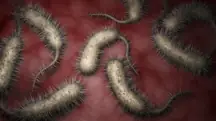A dangerous rise in cases of a deadly flesh-eating bacteria has health officials sounding alarms across the Gulf Coast states.

The bacteria, known as Vibrio vulnificus, thrive in warm coastal waters and can infect people through two primary ways: open wounds or by consuming contaminated seafood, particularly raw oysters.
According to the Centers for Disease Control and Prevention (CDC), it causes an estimated 80,000 illnesses annually in the U.S.
Louisiana has reported a significant spike this summer, with 17 confirmed cases, all requiring hospitalization, and four resulting in death.
That’s well above the state’s 10-year average of seven cases and one death during the same period, according to the Louisiana Department of Health. About 75% of these cases stemmed from wound infections acquired in seawater, PEOPLE reported.
Florida has reported a similar toll: 13 cases and four deaths in 2025 alone. Mississippi and Alabama have each reported a single case, neither fatal.
In total, this means that eight people have died across the states, with another 23 left ill from confirmed cases.
“This is a very scary-sounding bacteria, Vibrio vulnificus. Fortunately, it is rare, but it can be very deadly,” Dr. Alok Patel, pediatrician and ABC News medical contributor, told ABC News. “This bacteria normally exists in warm water, salty water, sometimes brackish water, especially during summer months.”

The CDC warns that most infections occur between May and October, when water temperatures are warmest.
People with liver disease, cancer, diabetes, or weakened immune systems are especially at risk, and the bacteria can be fatal in one out of five cases, sometimes within just 24 to 48 hours of symptoms appearing.
Per the outlet, symptoms depend on how the bacteria enter the body. For wound infections, patients may experience swelling, redness, discharge, and fever.
Bloodstream infections can cause chills, dangerously low blood pressure, and blistering skin lesions, while those who ingest the bacteria may suffer food poisoning-like symptoms, including watery diarrhea, cramping, nausea, and vomiting.
“If you come in contact with ocean water when you have cuts or eat raw seafood and you get sick, you want to make sure you see a doctor immediately, because this needs to be treated quickly,” Patel cautioned.

The CDC notes that infections can usually be treated with antibiotics, but in severe cases, amputation may be necessary to remove dead or infected tissue.
“The ocean is dirty news. Don’t get into it if you have open cuts,” Patel added.
In light of the surge, health officials are urging residents and visitors in Gulf Coast areas to be cautious this summer.
